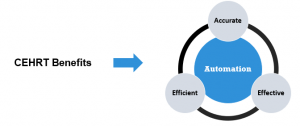
Mar 10, 2020 | Health eFilings, Partner
There are many commonly misunderstood aspects and nuances with the MIPS program, particularly in how points are earned. For a healthcare practice, it can be challenging to know exactly what to do to earn points, optimize the score, and protect their Medicare reimbursements. But, at the same time, the stakes have been raised every year and the final ruling of the program is even more complex than it has been in the past, further increasing the stress, burden, and financial risk for a healthcare practice.
The approach a practice takes to report for MIPS will greatly impact the results. Many do not understand or have awareness of, the different reporting methods available to them. Many Providers erroneously still think that a registry is the only reporting option available to them or that they are required to use a registry. Or, they think that their EHR covers their reporting obligation or that an EHR’s reports satisfy the MIPS requirements. These misperceptions and erroneous assumptions are detrimental to the financial interests of any practice.
There is a third reporting methodology that has been established and authorized by CMS, called CEHRT, or Certified EHR Technology (software). The CEHRT methodology assists CMS with their need for more valid data submitted through technology and to refocus Providers from merely using technology towards Providers leveraging technology to improve outcomes. Reporting via a CEHRT using software that has been certified by the ONC is a superior approach because it optimizes the points that could be earned and therefore, maximizes Medicare reimbursements for the practice.
Recently an RCM company CEO approached us at Health eFilings with the decision to use six of her clients to conduct a side-by-side comparison of the registry and Health eFilings (CEHRT) methodologies for reporting. In this manner, she intended to validate for herself whether a CEHRT or registry would generate the greatest ROI for her clients. The results of using Health eFilings’ MIPS Accelerator service, on average earned almost triple the points versus a registry for the same year for the same clients.

“Due to limited understanding and guidance, we weren’t aware of the differences of the reporting methodologies available for my clients. We believed there was greater opportunity, but the current registry methodology we had chosen didn’t demonstrate that for our clients.”
Katy, RCM Company CEO
This side-by-side comparison highlights not only that a CEHRT is a superior method of reporting as Health eFilings was able to leverage technology to facilitate the ease, accuracy, and completeness of tracking and reporting, but it also maximizes a Provider’s MIPS score. Additionally, given the levels of Medicare reimbursements for these practices, the higher score resulted in their earning a positive payment adjustment, which significantly improved their bottom line. And, take note that if the Registry were to perform the reporting for the 2019 reporting period, these practices would not earn enough points to avoid the penalty of negative 7%.
Health eFilings with its proprietary ONC certified software has many advantages over any type of registry:
- Automatically extracts data from any EHR or billing system
- No staff or IT time required to comply
- Benchmarks performance versus peers based on CMS standards
- The proprietary algorithm evaluates 9 million combinations to select the best quality measures to optimize the score
- Earn 10% in bonus points for the Quality category
- eCQM deciles earn more points than registry deciles
- Almost all eCQM’s have a CMS benchmark versus less than 25% of registry measures
- Electronically submits the data to CMS
And, important to note that it’s NOT too late to comply for the 2019 reporting period as Health eFilings is able to support new clients, but time is of the essence. Reach out NOW if you or your client hasn’t reported for 2019—there is NO REASON to accept the 7% revenue hit.
Now EZClaim and Health eFilings want to ensure you can partner with the only complete, end-to-end MIPS compliance solution that saves you significant time and money. To learn more, click the following link: https://healthefilings.com/ezclaim
[ Article was written by Sarah Reiter, Vice President of Strategic Partnerships with Health eFilings ].

Dec 10, 2019 | Health eFilings, MIPS Reporting, Partner
Top Three Reasons CEHRT Reporting Will Earn More Points and Maximize Reimbursements
Guest Author: Sarah Reiter of Health eFilings
The Medicare Access and CHIP Reauthorization Act (MACRA) and the program designed to implement the law, Merit-based Incentive Payments Systems (MIPS), have raised the financial stakes and the complexity of regulatory compliance for all healthcare systems. Simply put, healthcare organizations, like yours, have no choice but to engage and embrace the shift to value-based care to improve outcomes and therefore maximize your reimbursements.
And the method of reporting for the MIPS program can have a significant impact on your ability to earn points. Not all reporting methodologies are the same. There are BIG differences between MIPS reporting methods and what you don’t know could result in a 7% penalty increasing to 9% penalty for the 2020 Reporting Period, not to mention lost bonuses! The most effective, and most efficient, reporting methodology is known as Certified EHR Technology or CEHRT.
But why is CEHRT reporting the superior method? In this post, we will address the comparison of CEHRT reporting with the legacy “Registry” reporting method. Here are the top three reasons that working with a CEHRT, like Health eFilings, is the superior approach:
1. The software does all the work
Health eFilings’ ONC certified software is an “end to end electronic solution”. The software will extract, analyze and prepare the data in the most complete and accurate manner without requiring any administrative or IT support from you, the practice.

In contrast, registry reporting is fully a manual process and simply is a combination of purchased forms and a submittal vehicle. With a registry, the burden of all the administrative work is placed on staff and requires manual measure calculation and measure selection, all with no visibility to the measure benchmarks.
2. eCQMs earn more points
Health eFilings uses eCQMs (electronic Clinical Quality Measures) for purposes of reporting, and eCQMS offer more and better measures to optimize the points that can be earned. Almost all eCQMs have benchmarks that provide a clearer and more concise way to determine your performance and earn more points. As a point of insight, think of how points are earned as grading on a curve, where your actual performance percentage is irrelevant but what is relevant is the way that percentage compares to your peers, and my peers, it means all providers, regardless of specialty or geographic location, who submit data for that measure.
As a point of comparison, almost half of registry measures don’t have benchmarks which mean no matter how well you do on that measure, your score (or points earned) will be significantly limited, resulting in few overall points.
3. End-to-end electronic solution and earns bonus points
CMS has determined that the data submitted via technology is more complete and accurate, and because of this, CMS is incentivizing clinicians and practices by awarding them bonus points toward their MIPS score when they use a CEHRT like Health eFilings.
However, a registry is not a CEHRT and does not meet CMS’s definition of technology and as such does not provide verified accurate and complete data. Therefore, a registry provides no opportunity for any bonus points for the practice.
So, when complying with MIPS, it’s critical to utilize the reporting method that optimizes the points that could be earned and leverages technology to facilitate the ease, accuracy, and completeness of tracking and reporting to maximize the score. Reporting via a CEHRT like Health eFilings is the best approach because it optimizes the points that could be earned and therefore, maximizes Medicare reimbursements.
Beyond the inherent benefits of leveraging technology, working with Health eFilings has many advantages versus any other reporting methodology:
- Seamless integration with any EHR or billing system
- No IT or Administrative resources needed from the practice
- Tracks and reports for all MIPS categories
- Earn bonus points because Health eFilings is an “end to end electronic solution”
- A proprietary algorithm evaluates 9 million combinations to select the best quality measures to optimize the score
- Electronically submits all data to CMS
Is there anything I can still do for 2019 reporting?
Even though the end of the 2019 reporting period is quickly approaching, you do not need to accept that you must take the automatic penalty for this year. Health eFilings can support you with reporting for the 2019 reporting period and also advise you on your situation to set you up to be ready for the start of the 2020 reporting so you are able to optimize your score.
LEARN MORE
If you would like to stay up to date with recent happenings at EZClaim and more interesting articles, please click here to visit our blog page!





